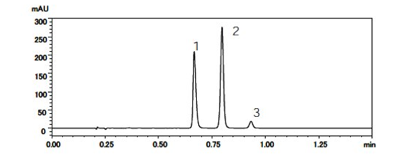HPLC Methods – How They Are Used In Laboratory
High-performance Liquid chromatography is a potent sort of column chromatography. As opposed to allowing a solvent to trickle through the column using only gravity, then it is forced through the column using pressures of as much as 400 atmospheres. This makes it considerably faster than standard column chromatography and also allows for the use of column packing material that has a much smaller particle size. This then provides a much larger surface area for connections between the stationary phase and the molecules flowing through it, providing a much greater separation of the mixture’s components. The other benefits of using the HPLC method over conventional column chromatography will be the more sensitive and readily automatable detection techniques which may be used. HPLC is often utilized in biochemistry and analytical chemistry to separate, distinguish and quantify chemicals.
HPLC employs a column Comprising chromatographic packing material the stationary phase, a pump which moves the mobile phase or phases throughout the column and a sensor showing the retention times of the various molecules this changes based on the interactions between the stationary phase, the molecules being examined and the kind of solvent used. A small volume of the sample to be examined is introduced into the mobile phase flow in the HPLC procedure. The analytic’s movement throughout the pillar is slowed by specific physical or chemical interactions with the stationary phase as it hastens the length of the column. The time where a particular analyze elutes is known as the retention period, which is a special characteristic of a specific analyze. The use of smaller particle size column packaging increases the linear speed, giving the parts less time to diffuse within the pillar.

This allows for higher resolution chromatograms. Frequent solvents used include any miscible mix of water or organic fluids, the most frequent being methanol and acetonitrile. The water that is used may contain buffers or additives to help in the rest of the elements of the analyze. Compounds like trifluoroacetic acid, which serves as an ion pairing agent, may also be used. A further refinement to the HPLC method is to change the mobile phase composition during the analysis, something that is referred to as gradient elution. The gradient chosen is dependent upon how hydrophobic the analyze is. When using a water or methanol gradient, the more hydrophobic elements will elute if the mobile phase is made up of methanol. This produces hydrophobic mobile phase. By comparison, hydrophilic compounds will elute under conditions of low methanol and a relatively substantial water mixture. The choice of solvents, additives and gradient used depend on the nature of the stationary phase and the analyze. what is hplc Often a set of tests are conducted on the analyze and a lot of trial runs could be processed in order to ascertain the HPLC method which offers the best separation of peaks with a given analyze.
